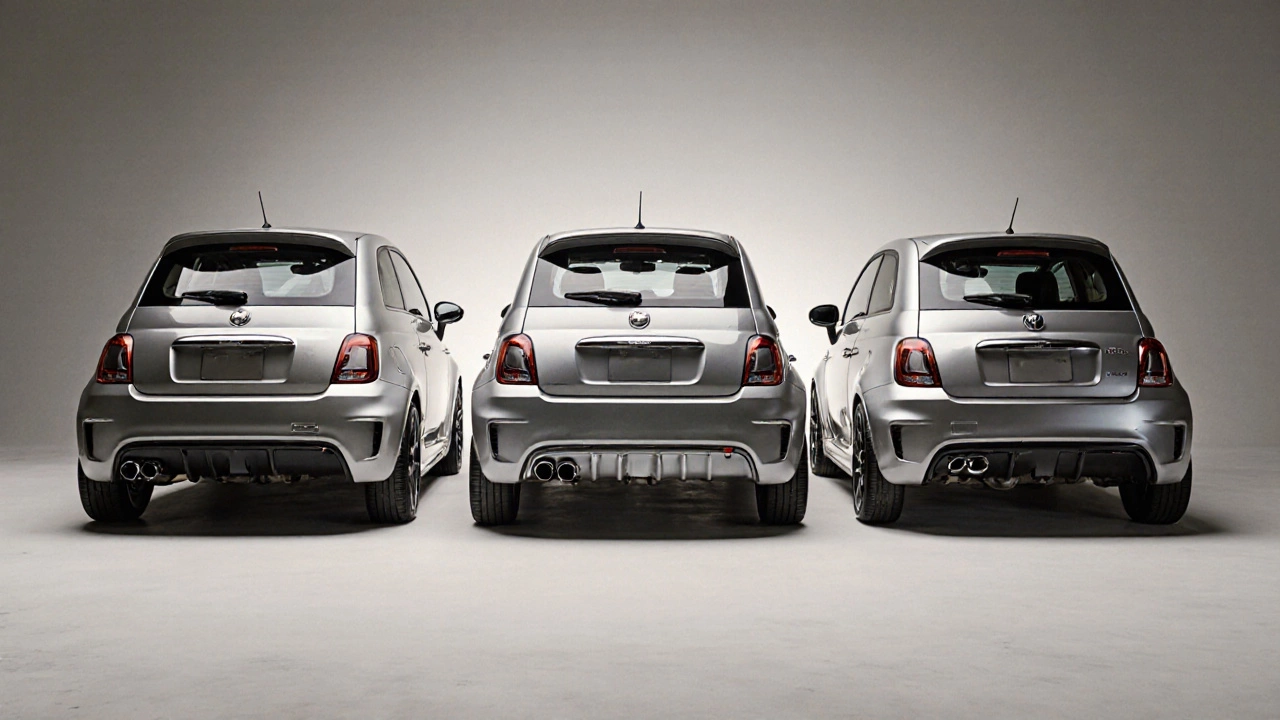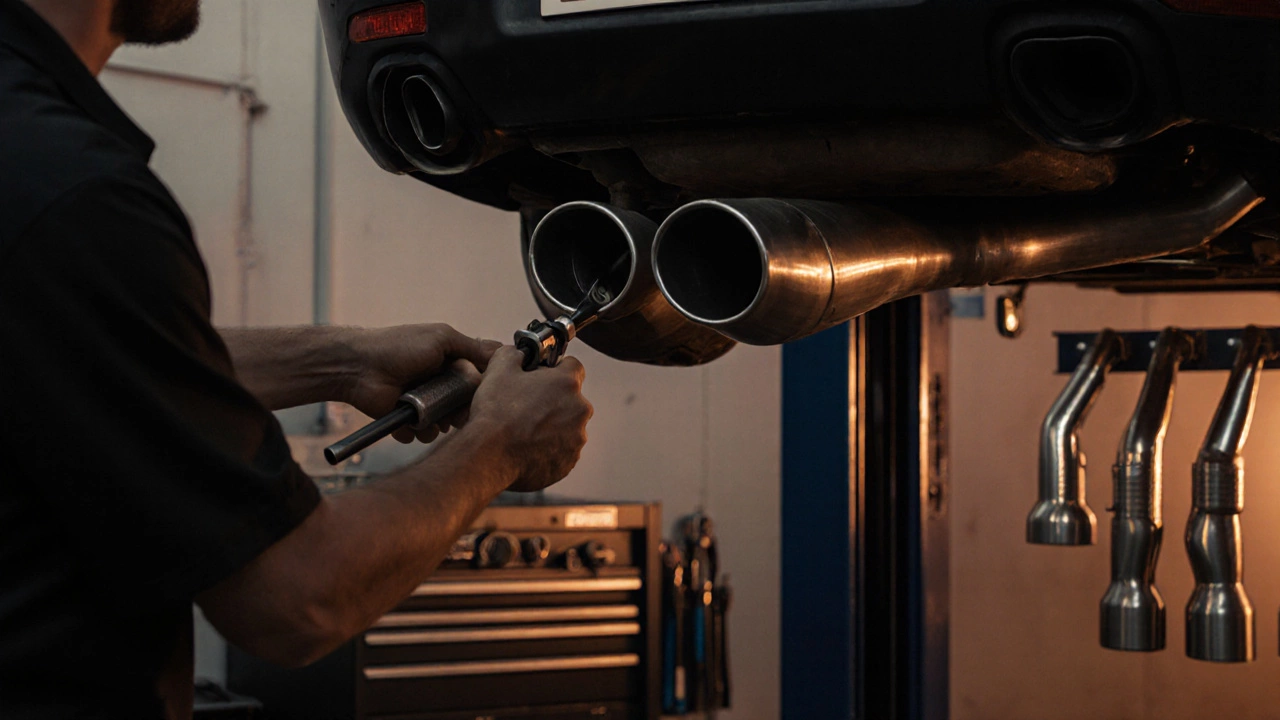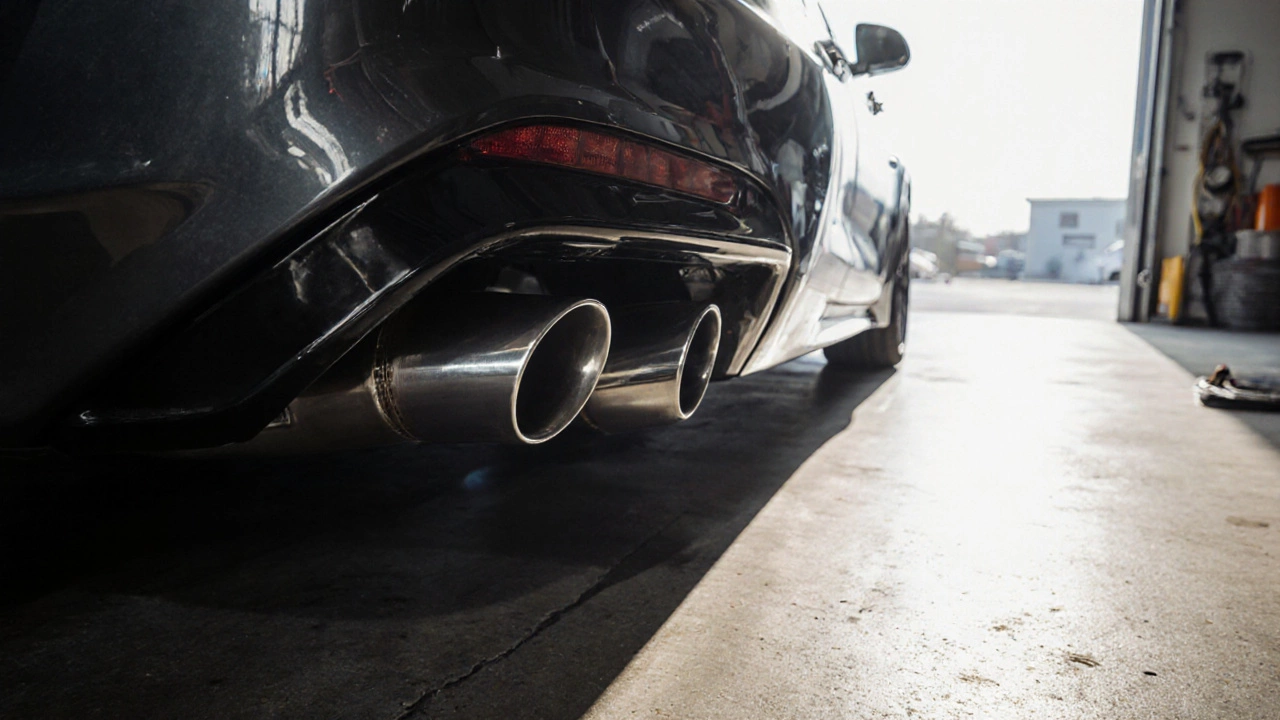Exhaust Sound & Compliance Calculator
Legal limit: 85 dB max (US), 82 dB max (UK)
Enter your settings and click Calculate to see results
Recommended Brands
Borla
Stainless steel (304)
MagnaFlow
Stainless steel (304) / Titanium
Corsa
Stainless steel (409) / Titanium
When it comes to upgrading your ride, the exhaust system is the piece that balances power, sound, and legality. Picking the best exhaust isn’t about chasing the loudest pipe; it’s about matching your goals, budget, and local regulations.
Key Takeaways
- Identify the type of exhaust that fits your performance goals - cat‑back, axle‑back, or full turbo‑back.
- Prioritise material (stainless steel vs. titanium) for durability and weight savings.
- Check decibel ratings and emissions standards before buying.
- Set a realistic budget; premium brands often offer longer warranties.
- Plan for installation - DIY is possible for many kits, but professional fitting may be required for complex systems.
Understanding Exhaust System Types
Most aftermarket kits fall into three families:
- Cat‑back exhaust replaces everything from the catalytic converter to the tailpipe. It improves flow without touching emissions equipment.
- Axle‑back exhaust swaps only the portion after the rear axle - usually the muffler and pipe. It’s the cheapest way to change tone.
- Turbo‑back exhaust is a full‑system replacement, including the turbo inlet, downpipe, and all downstream components. It delivers the biggest gains but costs the most.
Choosing between them depends on how much power you want and how deep a budget you have.
Core Selection Criteria
Four factors should dominate your decision:
- Flow rate - measured in cubic feet per minute (CFM). Higher CFM means less back‑pressure and more horsepower.
- Sound profile - loudness (decibels) and tone (deep vs. raspy). Personal preference meets local noise ordinances.
- Compliance - does the kit meet emissions compliance for your state or country?
- Durability - material, coating, and warranty length.

Material and Build Quality
Two metals dominate the market:
- Stainless steel (usually 304 or 409 grade). It’s corrosion‑resistant, affordable, and easy to work with. 409 is thinner and cheaper, while 304 offers better rust resistance.
- Titanium is lighter and can handle higher temperatures, but it costs 2‑3× more than stainless.
If weight savings matter for track days, titanium might be worth the premium. For daily drivers, 304 stainless gives a solid mix of price and longevity.
Sound & Legal Limits
Decibel (dB) ratings tell you how loud a system will be at idle and under load. Most street‑legal kits stay under 85dB at idle. Anything louder can attract fines or fail a MOT.
Brands often publish sound level data in both dB and a subjective description - “aggressive”, “muscular”, or “deep growl”. Listening to videos or demo events helps you gauge the real‑world effect.
Budget & Value
Prices range dramatically:
- Entry‑level cat‑back kits: $200‑$400.
- Mid‑range stainless steel systems: $500‑$900.
- Premium titanium turbo‑back sets: $1,200‑$2,500.
Don’t just chase the lowest price. Look at warranty (often 5‑10 years) and customer support. A well‑backed brand can save money if a component fails early.

Installation & Maintenance Tips
- Read the manual thoroughly - every kit differs in bolt pattern and required gaskets. \n
- Warm the engine for a few minutes, then let it cool. Hot metal expands and can make bolt alignment tricky.
- Torque bolts to the manufacturer’s specification (usually 20‑30lb‑ft for stainless clamps).
- Inspect the system for rattles after the first 100km; tighten any loose clamps.
- Periodic cleaning with a stainless‑steel safe cleanser prevents rust and maintains flow.
If you lack the tools or experience, a qualified shop can install most cat‑back kits in under two hours for a modest labor fee.
Comparison of Popular Aftermarket Brands
| Brand | Material | Typical Sound Level (dB) | Flow (CFM) | Price Range (USD) | Warranty |
|---|---|---|---|---|---|
| Borla | Stainless steel (304) | 78‑84 | 350‑420 | 450‑900 | 5‑years |
| MagnaFlow | Stainless steel (304) / Titanium | 80‑86 | 360‑440 | 400‑950 | 5‑years |
| Corsa | Stainless steel (409) / Titanium | 82‑90 | 380‑460 | 300‑800 | 3‑years |
All three brands meet US EPA standards, but local emissions rules vary. If you’re in the UK, verify the kit is “Euro 6 compliant” before purchase.
Frequently Asked Questions
Will a cat‑back exhaust increase horsepower?
Yes, but the gain is modest - typically 5‑10hp for V6 or smaller engines. Larger engines can see 10‑20hp because the reduced back‑pressure lets the engine breathe easier.
Do I need a new muffler when I upgrade the exhaust?
A cat‑back kit usually includes a new muffler designed for the desired sound. If you only replace the pipe (axle‑back), you can keep the stock muffler, but the tone will stay close to factory.
Is a titanium exhaust legal on UK public roads?
Titanium itself is not illegal, but the entire system must pass an MOT test and meet Euro 6 emissions. Choose a kit with a certified “type‑approval” label to stay compliant.
Can I install a cat‑back exhaust myself?
Most cat‑back kits are DIY‑friendly with basic hand tools. You’ll need a torque wrench, jack stands, and possibly a pipe cutter if the fit isn’t perfect. Allow 1‑2hours for a typical sedan.
How often should I clean my exhaust?
A quick rinse with water and a stainless‑steel safe spray every 6‑12months prevents corrosion. If you live near the coast or drive in winter salt, scrub more frequently.

